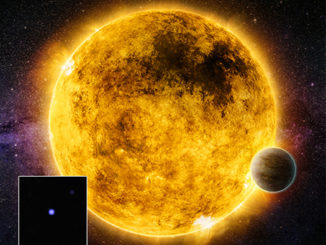In its 20 years of operation, NASA’s Chandra X-ray Observatory has studied hundreds of thousands of X-ray sources, producing a treasure trove of data stored in a public archive open to anyone a year after an observation was made, if not sooner. The archive and others like it serve the professional astronomical community, but they also offer amateur astronomers and other interested citizen scientists a chance to try their hands at producing scientifically accurate images leading to the discovery of new objects and phenomena. To celebrate “Archive Month” in October, the Chandra project released a sampling of composite images, processed by astronomy enthusiast Judy Schmidt, that combine optical data from the Hubble Space Telescope and X-ray imagery from Chandra. All six objects are located in the Large Magellanic Cloud, a satellite galaxy of the Milky Way some 150,000 light years from Earth.

The Chandra website includes links to software, instructions and tutorials on how to process the observatory’s X-ray observations into images.



